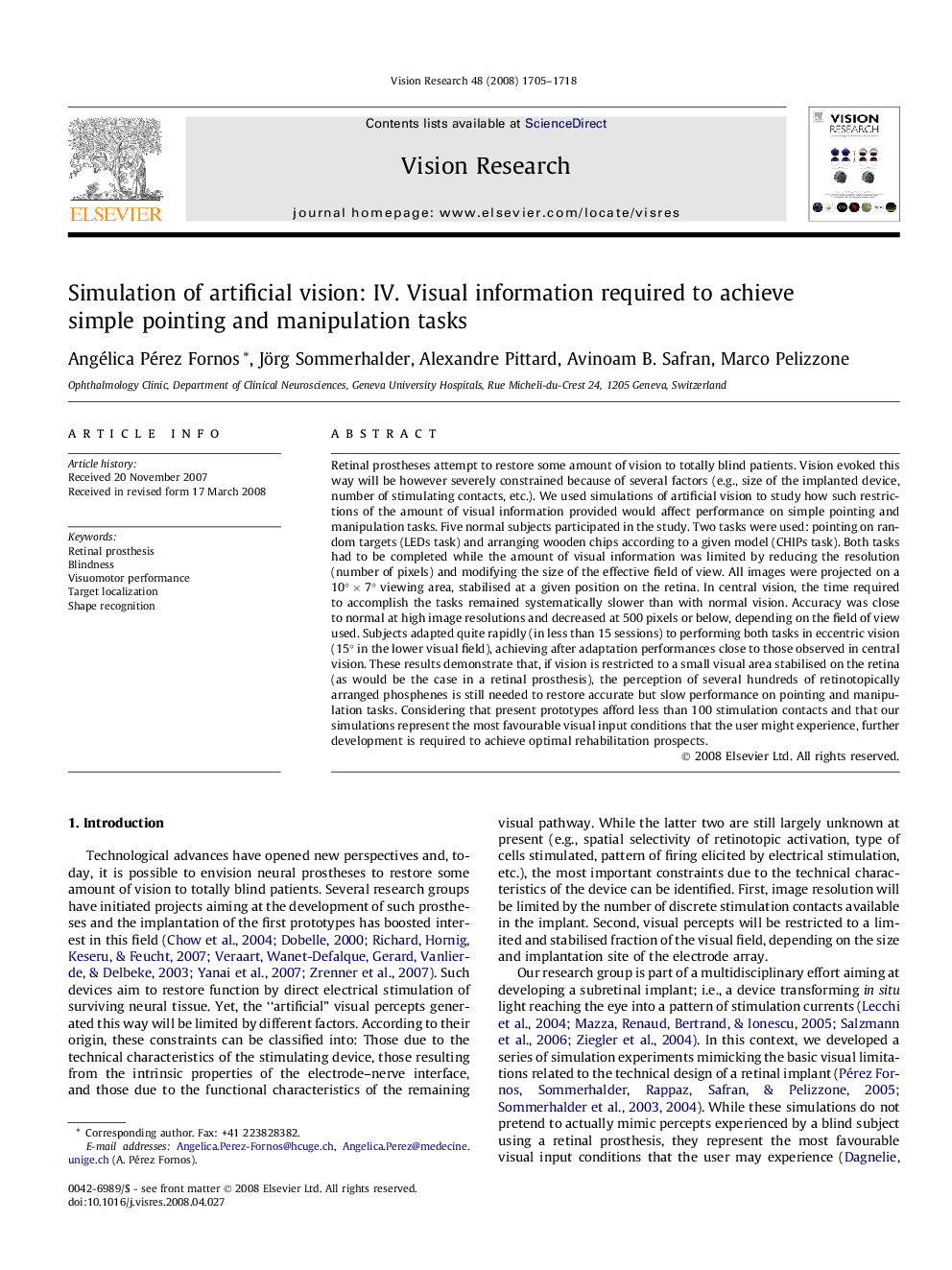| کد مقاله | کد نشریه | سال انتشار | مقاله انگلیسی | نسخه تمام متن |
|---|---|---|---|---|
| 4035009 | 1263498 | 2008 | 14 صفحه PDF | دانلود رایگان |

Retinal prostheses attempt to restore some amount of vision to totally blind patients. Vision evoked this way will be however severely constrained because of several factors (e.g., size of the implanted device, number of stimulating contacts, etc.). We used simulations of artificial vision to study how such restrictions of the amount of visual information provided would affect performance on simple pointing and manipulation tasks. Five normal subjects participated in the study. Two tasks were used: pointing on random targets (LEDs task) and arranging wooden chips according to a given model (CHIPs task). Both tasks had to be completed while the amount of visual information was limited by reducing the resolution (number of pixels) and modifying the size of the effective field of view. All images were projected on a 10° × 7° viewing area, stabilised at a given position on the retina. In central vision, the time required to accomplish the tasks remained systematically slower than with normal vision. Accuracy was close to normal at high image resolutions and decreased at 500 pixels or below, depending on the field of view used. Subjects adapted quite rapidly (in less than 15 sessions) to performing both tasks in eccentric vision (15° in the lower visual field), achieving after adaptation performances close to those observed in central vision. These results demonstrate that, if vision is restricted to a small visual area stabilised on the retina (as would be the case in a retinal prosthesis), the perception of several hundreds of retinotopically arranged phosphenes is still needed to restore accurate but slow performance on pointing and manipulation tasks. Considering that present prototypes afford less than 100 stimulation contacts and that our simulations represent the most favourable visual input conditions that the user might experience, further development is required to achieve optimal rehabilitation prospects.
Journal: Vision Research - Volume 48, Issue 16, July 2008, Pages 1705–1718